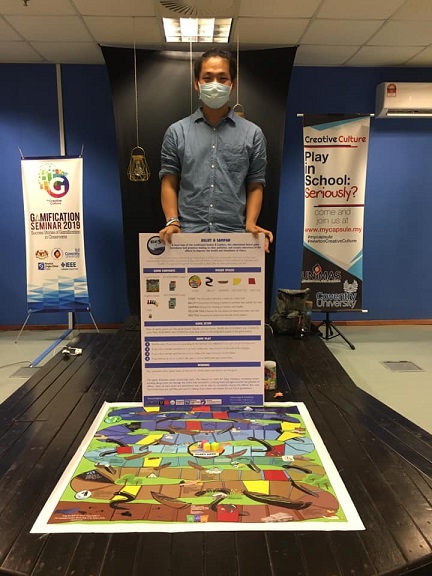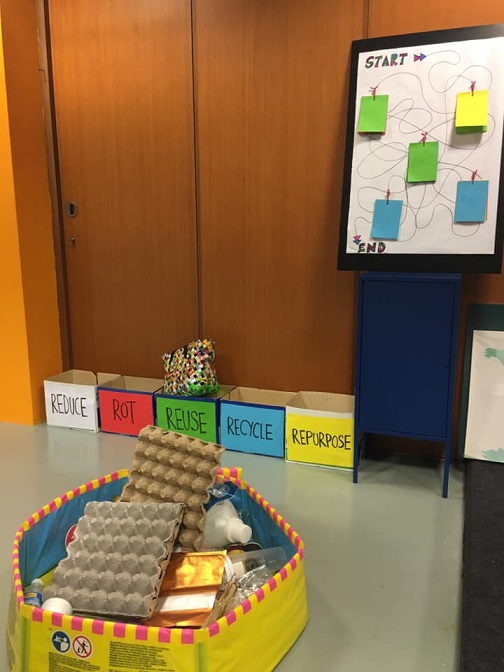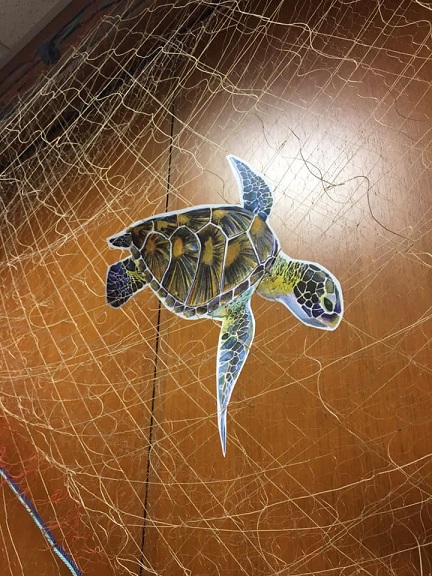Kota Samarahan, 7th October 2019 (SNN) : Have you heard of Escape Rooms? Have you ever experienced going through an Escape Room? If you have, what made your experience memorable?
Over the last years, there has a wide growth in educational escape rooms that teachers are adapting to fit the needs of their students. Its innovative active-learning approach brings critical thinking, social skills, and problem-solving through immersive and engaging play. The first recreational escape room can be traced back to Japan in 2007. To date, there are more than 10,000 recreational escape rooms in the world.
At the Faculty of Computer Science’s Open Day at Universiti Malaysia Sarawak (UNIMAS), the CreativeCulture team collaborated with the AQUAS team designed and built a special edition Escape Room with an educational twist. The theme of the escape room is on climate change. The Creative Culture team specialises in game design thinking for teaching and learning, while AQUAS team’s specialisation is in aquatic and marine sciences. Coincidentally, both scientists – Dr Jacey-Lynn Minoi and Dr Aazani Muhajid, also share a similar passion for climate change.
The escape room was set-up at the myCapsule Space at the Faculty of Computer Science, UNIMAS. This is the first Gamification Lab in Malaysia, and it is certainly the first time to construct an escape room for an environmental purpose. The teams decided to combine educational components with real-life physical props in the escape room to encourage lateral thinking. Four mini rooms focus on the importance of diversity of mangroves, the dangerous type of fishing gears, the effects of pollutions, and the identification of the different types of unsustainable development waste.

Those that came to the Open Day were mainly students from schools in Kuching. The two voted favourite rooms by the students were the reduce pollutions and greenhouse effects, where they have to find clues with a UV light, and the highly immersive obstacle route, whereby a group 4-5 had to walk arm-in-arm together through the obstacles between the fishing nets and ropes.
When asked how they feel after the obstacle room, in cohesion, they felt the distress of fish in fishnets. And this confirms that the escape room could modulate and promote empathy and emotional experience.
Teachers were interviewed, and they said, “the topics on climate change is not part of the school syllabus. Hence these game activities are extremely beneficial for them to become aware of the issues of climate change, and know about the 5R’s of waste management.”
Previously, the CreativeCulture team has also created an escape room at the IUCEL 2019 with computational thinking as a theme. Escape rooms in education may be new in Malaysia, but those who have implemented it in schools in their teaching and learning were intrigued by its outcomes. Game design is a tool that could be used to promote higher-order thinking. The potential is undeniable; when you combine challenges, rewards, clues and obstacles with learning, you will have the winning combination of high learning interest and engagement.
UNIMAS is at the forefront of experimenting with ideas to improve teaching and learning. The gamification lab is an example of such innovation, as it becomes the hub for designing playful experiments to engage higher-order thinking skills.






